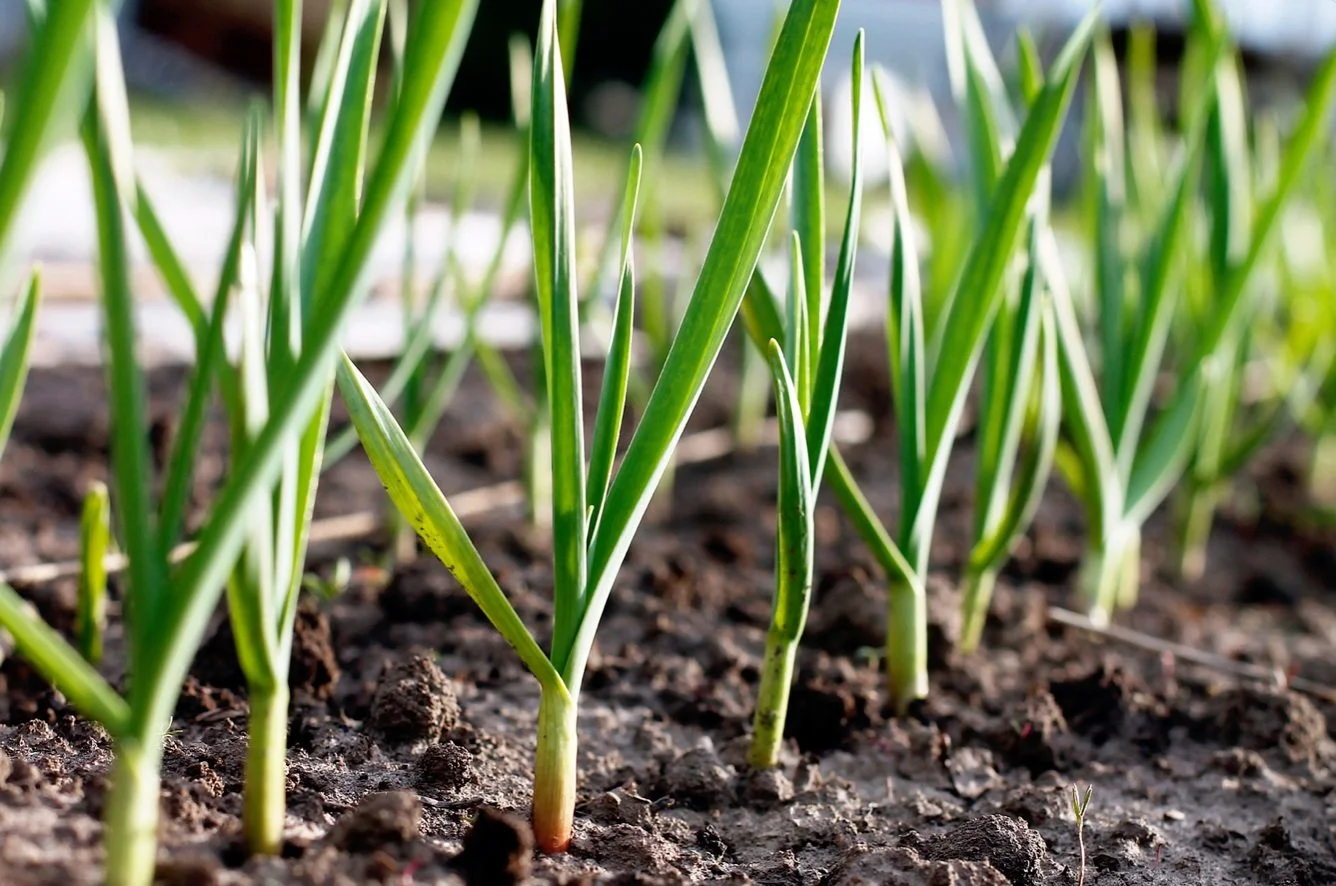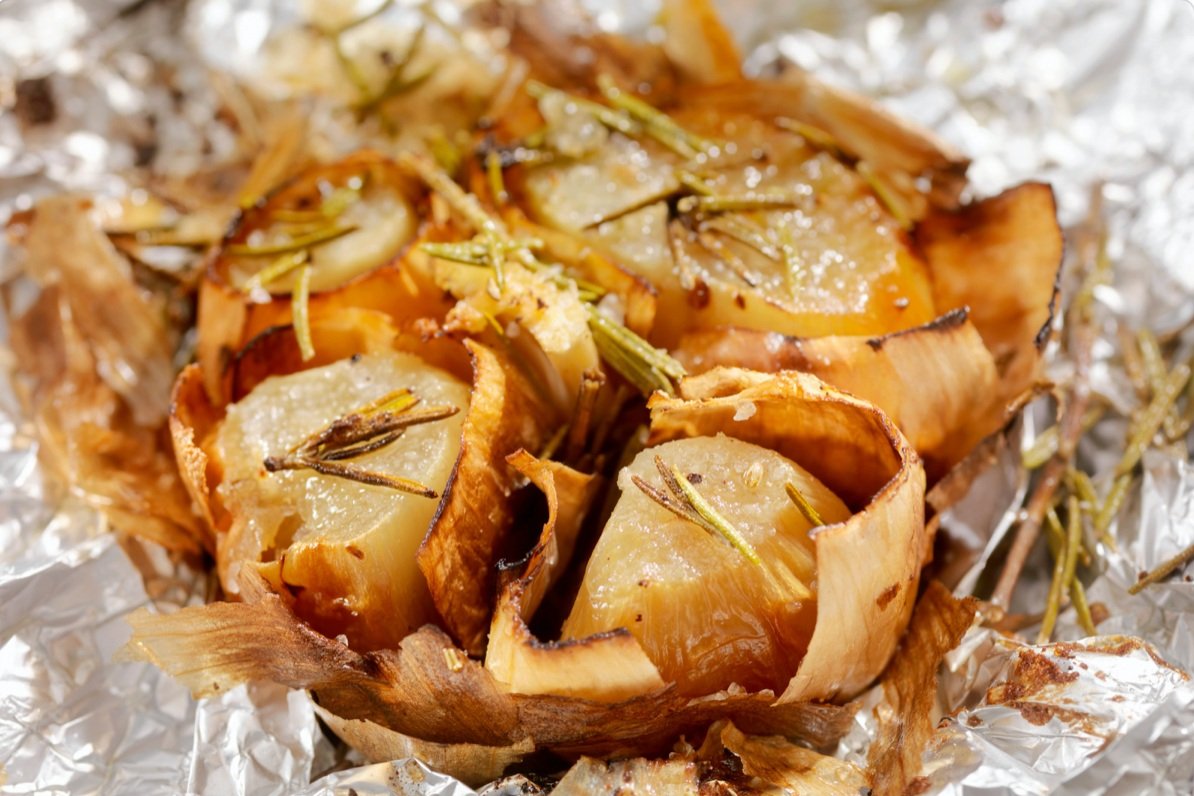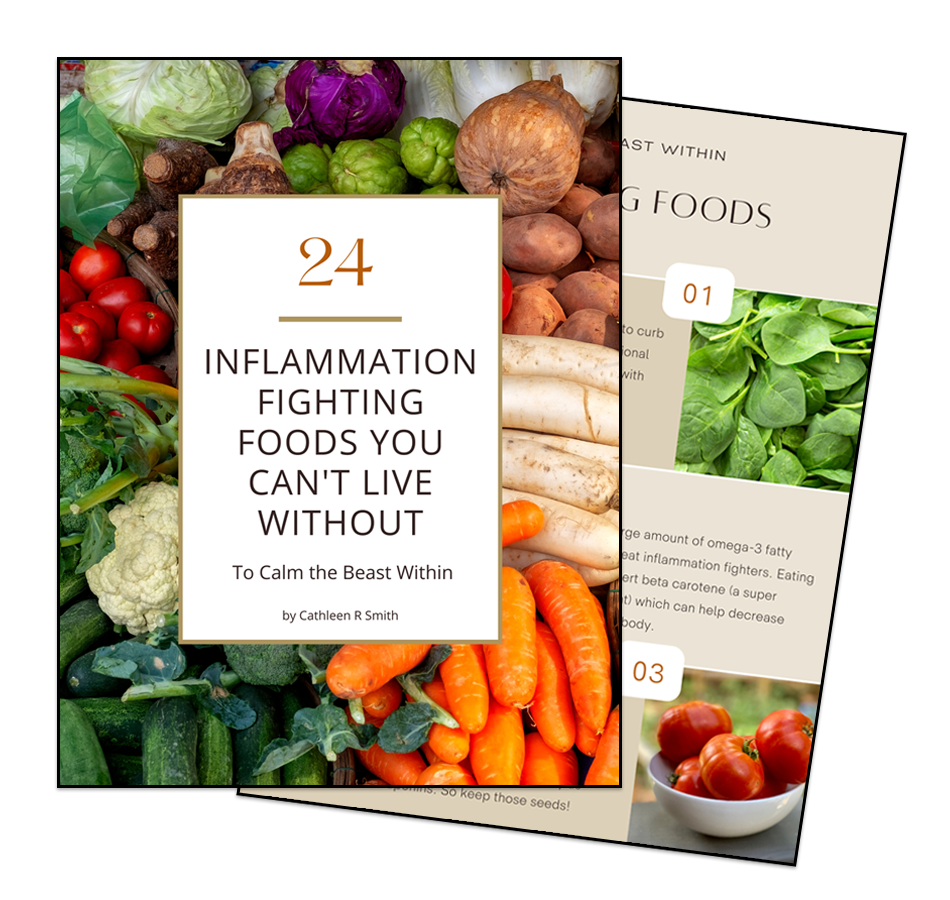How’s Your Garlic Growing?
So here’s the thing. I love garlic! It’s easy to grow, painless to harvest, great to cook with and can be dried so you never have to buy garlic powder again. The only drawback is that it takes a while.
I plant my garlic in the fall - usually some time in November. And in the south, soft-necked garlic grows better than hard-necked garlic. This year I chose my all time favorite - Inchelium Red - an artichoke variety that usually produces bulbs that are at least 3 inches in diameter. I also wanted to try another variety called California Early, which has a really mild flavor. But my supplier was out of stock and substituted California Late instead.
California Late is a silverskin variety that’s one of the most popular garlics found in the United States. It matures later than California Early (go figure, LOL) and is a bit hotter, with more of a classic garlic taste. What I’ve found is that while both types of soft-necked garlic produce nice sized bulbs, the artichoke varieties tend to have larger cloves.
For something a little different this year, I planted some elephant garlic in my garlic arsenal. So elephant garlic isn’t really a true garlic, but a type of leek. The bulbs are very large (sometimes as large as a small grapefruit) but with a lot fewer cloves.
Elephant garlic takes 2 growing seasons to complete its life cycle - in other words, it’s a biennial. The first year, the plant doesn’t flower and you will usually get just one bulb. The second year, the plant will send up flower stalks and the single bulb will divide into multiple cloves. But if you time your planting for the fall, your elephant garlic bulb may have enough time to divide. If not, you can harvest just the one bulb or leave your garlic in the ground to grow and split the following year.
Garlic is ready to harvest when the lower leaves are turning yellow and there are about 6 green leaves left on the plant. Don’t wait until the tops have turned brown and the plant has fallen over. Use a garden fork to loosen the soil and then pull up the plants by hand. Just brush off the dirt and bundle about 8 to 10 garlic stems together with twine.
Hang your garlic bundles in a cool, dark, dry, well-ventilated space. Protection from direct sun and good air circulation are key. Let the bundles remain undisturbed for at least one month. When curing is complete, cut the necks to about an inch above the bulbs, trim the roots and use a soft toothbrush to clean away any remaining dirt. Store your garlic bulbs in mesh bags hung from the ceiling in your pantry and enjoy!
Here’s the thing - garlic breath just may be worth it! Garlic has super powerful antioxidants and sulphur compounds that may help reduce inflammation and protect cells against aging, damage and oxidative stress. Bet you didn’t know that.
Research shows that garlic can have a positive effect on your arteries and regulating your blood pressure. It can help clear up your skin, boost immunity and help protect your food from bacterial invasion. And garlic is almost always at the top of the list when looking at foods that help fight chronic inflammation.
Plus - you can add it to just about anything! Or you can simply roast it: Peel away the outer layers of a whole Garlic head, cut about 1/4 inch off the top, place in a small baking dish, drizzle with olive oil and a little water, season with salt and pepper, cover tightly with foil and bake at 400 degrees for about 30 minutes. You can even add a little chopped rosemary or other fresh herbs to spice things up!
Or you can make Garlic Butter Sauce: Melt one stick unsalted butter, 4 to 6 cloves minced garlic, 1/4 cup chopped fresh herbs (i.e., basil and oregano) and one teaspoon kosher salt in a saucepan and simmer for just a minute. Try this drizzled over fresh green beans, chicken or pasta.
So next season - try planting a little garlic in your garden - maybe a few different varieties. But remember that elephant garlic may need its space to get multiple cloves.
And if you want to learn about other foods like garlic that are natural anti-inflammatories and how they can help fight chronic inflammation, download my guide to 24 Inflammation Fighting Foods You Can’t Live Without - it’s worth it!






